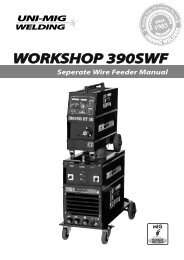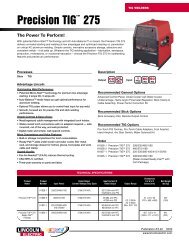Cleaning, Care & Maintenance of Stainless Steel - BJH
Cleaning, Care & Maintenance of Stainless Steel - BJH
Cleaning, Care & Maintenance of Stainless Steel - BJH
You also want an ePaper? Increase the reach of your titles
YUMPU automatically turns print PDFs into web optimized ePapers that Google loves.
Atlas Specialty Metals<br />
<strong>Cleaning</strong>, <strong>Care</strong> & <strong>Maintenance</strong> <strong>of</strong><br />
<strong>Stainless</strong> <strong>Steel</strong><br />
Tech Note no. 5<br />
(cont)<br />
PROBLEM CLEANING AGENT COMMENTS<br />
Rust and other<br />
corrosion products.<br />
Embedded or<br />
adhering “free iron”.<br />
Routine cleaning <strong>of</strong><br />
boat fittings.<br />
Cooking pot boiled<br />
dry.<br />
Dark oxide from<br />
welding or heat<br />
treatment.<br />
Scratches on<br />
polished (satin or<br />
brushed) finish.<br />
Very light rust stains can be<br />
removed by 10% nitric acid.<br />
More significant rust or<br />
embedded iron will require<br />
pickling. See also previous<br />
sections on Passivating and<br />
Pickling. Sand or glass-bead<br />
blasting is another option.<br />
Frequent washing down with<br />
fresh water.<br />
Remove burnt food by soaking<br />
in hot water with detergent,<br />
baking soda or ammonia.<br />
“Pickling Paste” or pickling<br />
solutions given on previous<br />
page.<br />
Slight scratches - use<br />
impregnated nylon pads.<br />
Polish with polishing wheel<br />
dressed with iron-free<br />
abrasives for deeper scratches.<br />
Follow polish lines. Then clean<br />
with soap or detergent as for<br />
routine cleaning.<br />
Wear PPE as appropriate.<br />
Afterwards rinse well with<br />
clean water. Mix in acidpro<strong>of</strong><br />
container, and be<br />
very careful with the acid.<br />
(see Precautions for acid<br />
cleaners)<br />
Recommended after each<br />
time the boat is used in salt<br />
water.<br />
Afterwards clean and<br />
polish, with a mild abrasive<br />
if necessary. See comments<br />
re steel wool.<br />
Must be carefully rinsed,<br />
and use care in handling<br />
(see Precautions for acid<br />
cleaners).<br />
Do not use ordinary steel<br />
wool - iron particles can<br />
become embedded in<br />
stainless steel and cause<br />
further surface problems.<br />
<strong>Stainless</strong> steel and “Scotchbrite”<br />
scouring pads are<br />
satisfactory.<br />
Precautions<br />
Acids: should only be handled using personal protective equipment as detailed in<br />
relevant MSDS and other product-specific information. <strong>Care</strong> must be taken that acids are<br />
not spilt over adjacent areas. All residues must be flushed to a treated waste stream<br />
(refer to local water authorities for regulations and assistance). Always dilute by adding<br />
acid to water, not water to acid. Use acid-resistant containers, such as glass or plastics.<br />
If no dulling <strong>of</strong> the surface can be tolerated a trial treatment should be carried out;<br />
especially for pickling operations. All treatments must be followed by thorough rinsing.<br />
Solvents: should not be used in confined spaces. Smoking must be avoided when using<br />
solvents.<br />
Chlorides: are present in many cleaning agents. This entails risk <strong>of</strong> pitting corrosion <strong>of</strong><br />
stainless steel. If a cleaner containing chlorine, chlorides, bleaches or hypochlorites is<br />
used it must be afterwards promptly and thoroughly cleaned <strong>of</strong>f.<br />
Revised May 2006 4 <strong>of</strong> 5





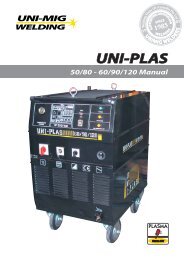
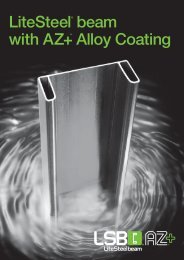

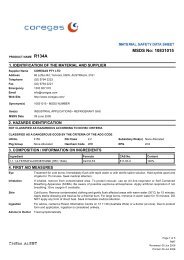

![Weldmatic 175 [internal wirefeeder] - BJH](https://img.yumpu.com/48683580/1/184x260/weldmatic-175-internal-wirefeeder-bjh.jpg?quality=85)




